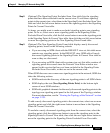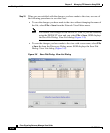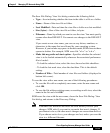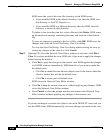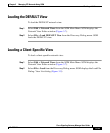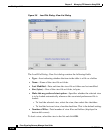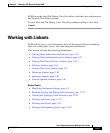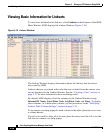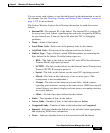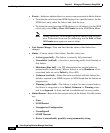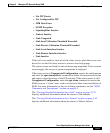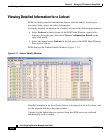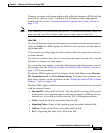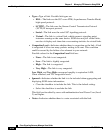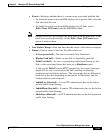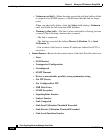
3-39
Cisco Signaling Gateway Manager User Guide
78-15589-01
Chapter 3 Managing ITP Networks Using SGM
Working with Linksets
You can resize each column, or sort the table based on the information in one of
the columns. See the “Resizing, Sorting, and Hiding Table Columns” section on
page 3-279 for more details.
The Linkset Window displays the following information for each discovered
linkset:
• Internal ID—The internal ID of the linkset. The internal ID is a unique ID
for every event, link, linkset, signaling point, and node, assigned by SGM for
its own internal use. It can also be useful when the TAC is debugging
problems.
• Name—Name of the linkset.
• Local Point Code—Point code of the primary node for the linkset.
• Adj Point Code—Point code of the adjacent node for the linkset.
• Linkset Type—Type of linkset, which SGM determines by examining the
links defined in the linkset. Possible linkset types are:
–
HSL—The links in this linkset use the SS7-over-ATM (Asynchronous
Transfer Mode) high-speed protocol.
–
SCTPIP—The links in this linkset use the Stream Control Transmission
Protocol (SCTP) IP transport protocol.
–
Serial—The links in this linkset use the serial SS7 signaling protocol.
–
Mixed—The links in this linkset are of two or more types. (This
arrangement is not recommended.)
–
Virtual—The links in this linkset are virtual links, which connect
signaling point instances running on the same device. SGM does not poll
virtual linksets, nor does it display real-time data or accounting statistics
for virtual linksets.
–
Other—No links have been defined for this linkset.
• Links—Total number of links in the linkset.
• Active Links—Number of links in the linkset that are Active.
• Congested Links—Number of links in the linkset that are Congested.
• Ignored—Indicates whether the linkset is to be included when aggregating
and displaying SGM status information.
• Notes— Indicates whether there is a note associated with the linkset.



